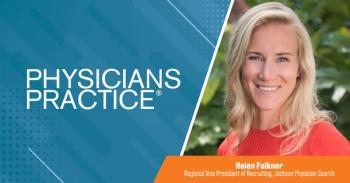
ICD-10: Next Steps for Physicians' Practices
Sure, ICD-10 implementation is two years away, but there are things your medical practice should start doing today to prepare.
It’s official!! As you know, on August 24, CMS announced that ICD-10 will indeed be delayed one year. The final rule set the implementation date as October 1, 2014. This gives all providers a little more than two years for preparation of the implementation. So what should you be doing right now to prepare? Now is the time to begin your preparation!
Reviewing the information concerning ICD-10 on the
If you are part of the implementation process you should understand all of the necessary steps to transition to ICD-10. Attending an implementation boot camp in 2013 will show you all the steps you need to accomplish to have a successful implementation.
Documentation to meet the transition will be one of the biggest changes and challenges with ICD-10-CM. You should begin to prepare now! Coders and physicians do not always speak the same language, so they need to work together to improve the clinical documentation and be able to code the specificity that ICD-10-CM requires.
Coders should update their anatomy and pathophysiology knowledge and make sure they have a good understand of disease processes. Now is a great time for coders to update their skills.
Providers need to improve their clinical documentation. The first thing that needs to be done is to look at the provider documentation and see where it is lacking. Start by running a frequency report. Take a look at your providers most utilized codes. Once you have the list of codes begin with the most utilized code and move forward to less used codes.
Take the first code and pull documentation where this code was used and look at the documentation. Can you code this documentation with ICD-10 without using unspecified codes? If you answer yes and you don’t need additional documentation then you can move on to the next code. If you answer no then you need to provide education and training to your provider.
As we have two years until the “go live” date, it is too early for coders to get full code set training because of the risk of forgetting the training and having to relearn it in 2014. Begin preparing now by updating your skills, working on clinical documentation, and implementation planning. Be proactive and don’t think someone else will take care of it for you. If you begin to prepare now your transition to ICD-10 will be a success.
Jackie Stack is an ICD-10 specialist for
Newsletter
Optimize your practice with the Physicians Practice newsletter, offering management pearls, leadership tips, and business strategies tailored for practice administrators and physicians of any specialty.








